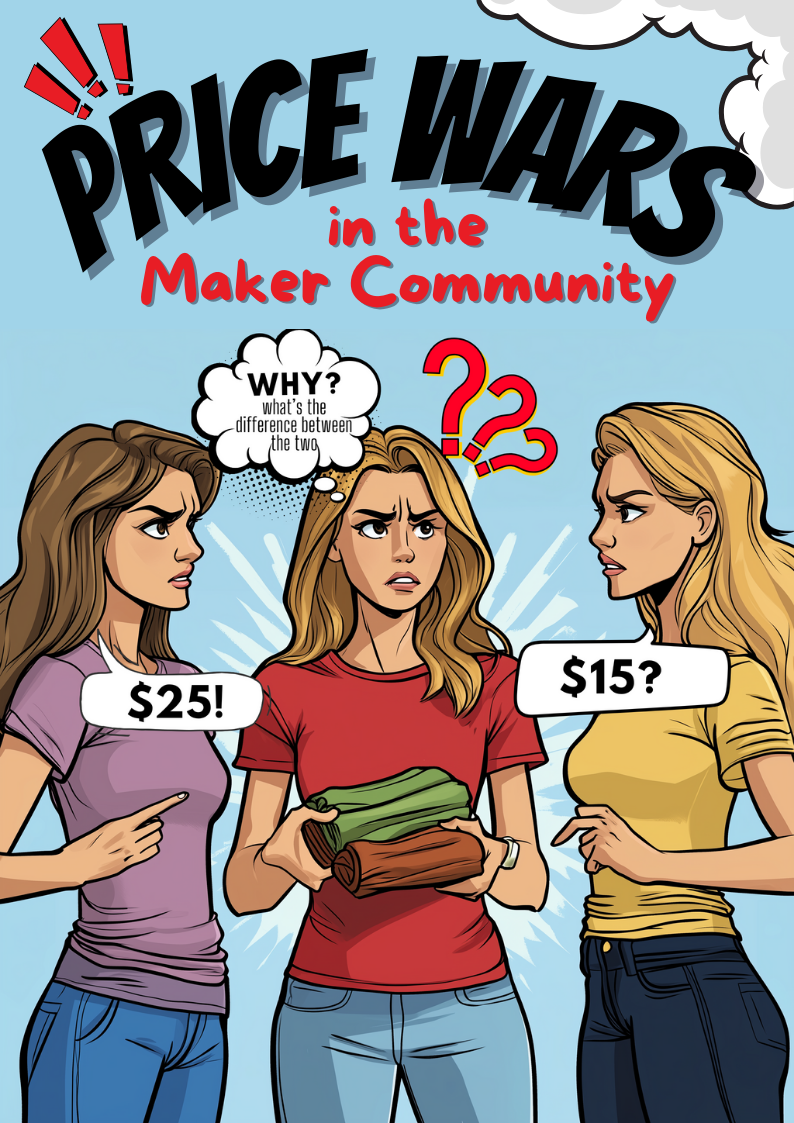Price Wars in the Maker Community
The Price War in the Maker Community: How Underpricing is Hurting Small Businesses
In recent years, the handmade market has become more competitive than ever. With sales already declining due to economic struggles, many seasoned makers—those who rely on their business to support their families—are facing serious financial hardships. Some have even lost their businesses or homes as a result.
One of the biggest factors contributing to this crisis is the rise of hobbyists and new makers who underprice their work, often without realizing the damage they’re causing. While there’s nothing wrong with starting a business or enjoying crafting as a hobby, the growing trend of extreme underpricing has made the handmade market cutthroat, pitting makers against each other in ways that harm the entire community.
How Underpricing is Hurting the Handmade Market
1. It Devalues the Work of Experienced Makers
Seasoned business owners spend years perfecting their craft, investing in high-quality materials, equipment, and business education. They price their products based on real costs—materials, labor, overhead, and the time needed to create something unique.
But when hobbyists and inexperienced makers enter the market and price their work far below market value, it creates an illusion that handmade goods should be cheap. Consumers start expecting lower prices, making it harder for legitimate businesses to charge what their work is truly worth.
2. It Creates Unsustainable Business Models
Many new makers price low because they’re unaware of the true cost of running a business. They may see early success due to their lower prices, but over time, they struggle to keep up. The reality is:
- If you’re not making a profit, you’re not running a business—you’re running a hobby.
- If you don’t factor in your time and costs, you’re working for free.
When these makers eventually burn out or realize they can’t sustain their business at those prices, they often close shop—but not before causing lasting damage to the market by shifting consumer expectations downward.
3. It Creates a Toxic, Cutthroat Market
The rise of what we’ll call “cutthroat crafters”—those who undercut prices, boast about selling cheaper, and flood the market with underpriced work—has led to resentment and division within the maker community. Instead of supporting one another, many makers now feel forced into a price war just to survive.
This kind of pricing battle is unsustainable and harmful for everyone:
- Consumers end up with lower-quality products. Many of the cheapest products cut corners on materials or workmanship.
- Legitimate businesses suffer. When experienced makers are forced to lower their prices just to compete, they risk losing everything—many already have.
- The overall market collapses. If pricing continues to drop below sustainable levels, fewer skilled makers will be able to survive, leaving consumers with fewer high-quality, handmade options.
What Needs to Change?
The handmade community thrives when businesses can sustain themselves, create high-quality products, and charge fair prices. That means:
- Hobbyists should price responsibly—if you’re selling for fun, don’t undervalue the work of those who rely on their business for survival.
- New makers should do their research—learn about pricing, market value, and the real cost of running a business before setting prices too low.
- Consumers need to understand the value of handmade goods—quality, craftsmanship, and sustainability come at a price.
The handmade market isn’t just about making and selling—it’s about ensuring that makers can continue doing what they love without sacrificing their livelihoods. Pricing fairly isn’t just about business; it’s about respecting the craft and those who depend on it to survive.
What are your thoughts? Have you seen this pricing war impact your business or purchases? Have you purchased from a new maker only to end up spending more for a replacement? Let’s talk in the comments!

